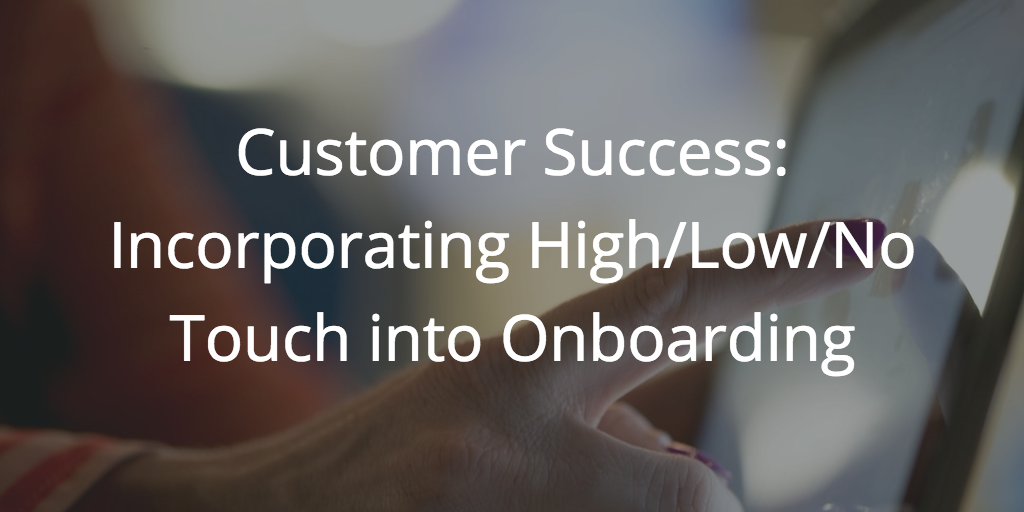 Proper Customer Onboarding isn’t done to prevent churn; it’s done to ensure the customer achieves their Desired Outcome. Retention comes from that. But what is “proper” customer onboarding? Let’s find out.
Proper Customer Onboarding isn’t done to prevent churn; it’s done to ensure the customer achieves their Desired Outcome. Retention comes from that. But what is “proper” customer onboarding? Let’s find out.
For context, on Friday, May 19, 2017, I did a Customer Success Ask Me Anything (AMA) on Facebook live. It was awesome. The video is embedded below and below that is the transcript (edited for better readability) that answers the question.
How to incorporate High/Low/No Touch into Onboarding?
So the question is “How do we handle, or, how do we incorporate the high/low no touch model into onboarding? And make sure we’re onboarding our most important customer?”
This is another example of sort of an antiquated view of Customer Success.
Customer Success is something that all customers get. The way that we interact with them, what we provide them, is part of their Appropriate Experience. If we have a customer segment. Let’s say we have several customer segments, they all share the same required outcome. They all have this business outcome that they’re trying to accomplish. And that’s why they started to do business with us.
But they all have different Appropriate Experiences. Then we’re going to need to provide them the Appropriate Experience. So, you know, some companies, some customer segments are gonna be more complex. They’re going to need more dedicated human resources to help them with their onboarding. To get them to go through implementation.
To go through maybe some consulting other professional services. Whatever that is. Then there’s going to be some customers that don’t need that, don’t want that. Their Appropriate Experience is that they bought from you and they should just be left alone.
The thing is, we often, we’ll say high/low in no touch, but what we usually mean is high value, mid value and like low value. Or high revenue, middle revenue, and low revenue. When the reality is, the customers that need the high touch, maybe the low revenue customers, and the customers that would be just fine without you interfering in their lives.
Maybe the customers that pay you a lot. But you don’t understand that so you’ve created an engagement model based on what they pay you. And it’s ultimately inappropriate for most of the customers.
So you really need to understand your different customer segments and understand what the Appropriate Experience is for them. And if there is a low revenue segment, that you would like to be no touch. But they require a high-touch.
You have a couple of options. One, you can say they don’t pay us very much. So they get the low touch option whether they like it or not. Which is a customer negative way to do business, and ultimately will come back to bite you. Or you can do the right thing and say, “The Appropriate Experience for this customer segment is high touch”.
They don’t pay us very much. And I asked them if they would pay more and they said no. Which means I can’t give them the Appropriate Experience. Which means they’re a bad fit. So I’m not going to do business with that customer segment because I can’t make, I can’t give them the Appropriate Experience in an economically feasible way.
So instead of punishing them for not paying us very much, is what a lot of companies do, we would say, “They’re a bad fit. I’m gonna not do business with that type of customer”.
Ultimately you have to give your customers an Appropriate Experience. And if you don’t, those seeds of churn, especially in the onboarding process, the seeds of churn are going to be planted very very early. And that may lead to, that may be why customers churn out after, you know.
Or they don’t renew their one-year contract with you. Or they churn out after a couple of months. Because you’re giving them an Appropriate Experience up front.
So I would decouple what somebody pays us from what the experience we’re going to give them is, really look at that Appropriate Experience. And then go back and say, “Okay. This is the Appropriate Experience. This is what they pay us.
Is that economically feasible for us?” If not, they’re a bad fit.



